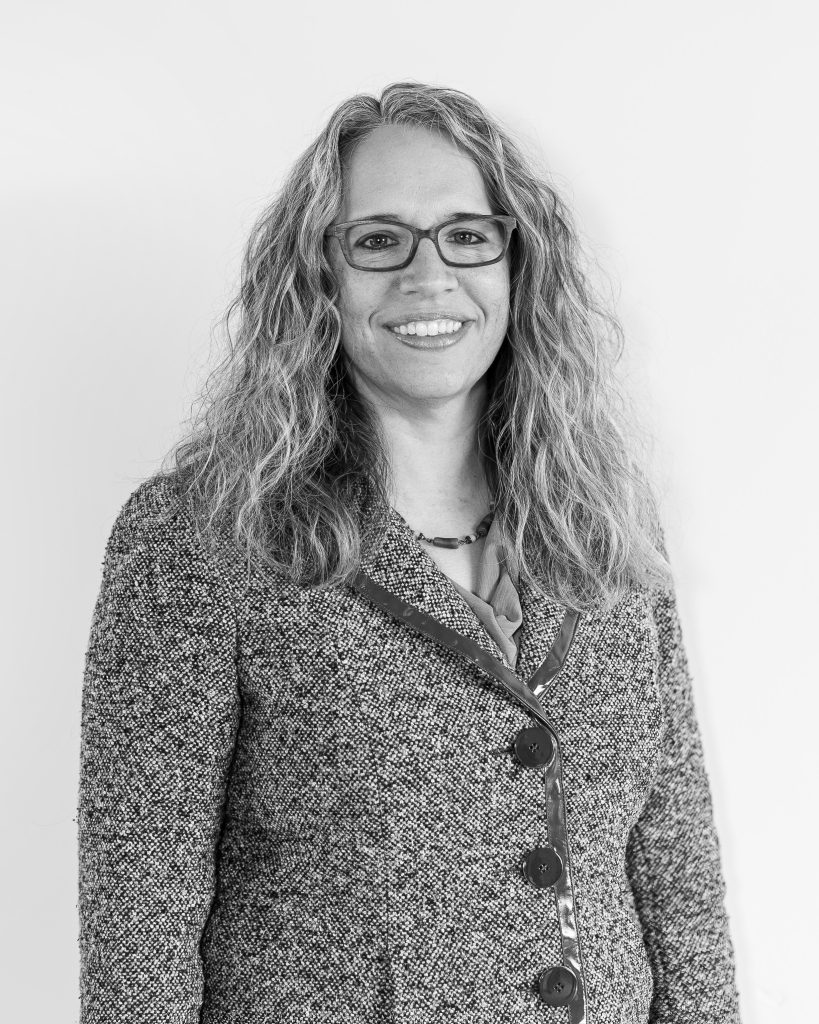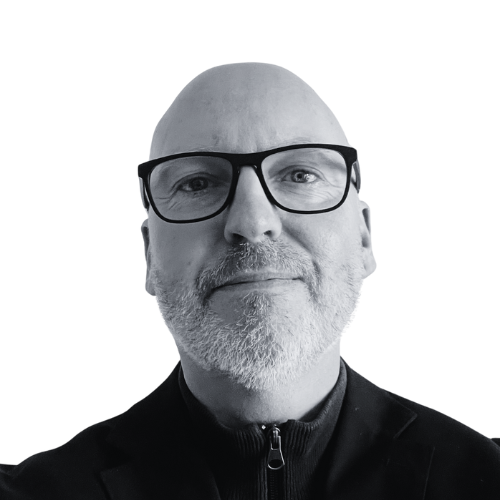Quantum
Quantum after the hype. Reality checks in
Reading time: 8 mins
Former US Air Force engineer Mandy Birch brings systems thinking and a business mindset to quantum infrastructure
“You don’t need a PhD to help build a quantum computer but you do need precision,” says TreQ CEO and founder Mandy Birch. We are tucked into a soundproof booth just outside of the Economist Impact Commercialising Quantum Global event in London, talking about quantum start-ups, industry hype and Birch’s own evolution into leading a newly-funded quantum business.
“I spent 30 years in national security,” says Birch, referring to her career in the United States Air Force. “I started out in highly technical roles, drones, autonomous vehicles in the ’90s, and eventually moved into managing major infrastructure programmes.”
It was a Silicon Valley leadership programme for military veterans that led Birch to the quantum industry.
“I got connected with a16z (Marc Andreessen and Ben Horowitz’s VC firm) and its executive placement portfolio,” she explains. “Then I found quantum computing, and I got bit by the quantum bug.”
She joined Rigetti Computing, where she spent five years helping steer the company through scale-up and IPO. But along the way, she noticed a market gap, one that would later form the foundation of TreQ.
“Customers were calling and asking for on-prem deployments,” she says. “They still needed access to the underpinning technologies… more of a white box, not just closed systems with top-level access.”
UK-based TreQ recently raised $5 million in seed funding led by Lavrock Ventures. Its pitch is straightforward but timely – design, build, and operate modular, vendor-flexible quantum computing clusters tailored to the needs of sovereign nations, research institutions, and regional development bodies.
“We work with a customer to figure out which technology or set of technologies best matches what they’re trying to do with infrastructure,” says Birch. “A lot of it right now is economic development or universities trying to get a seed project of basic infrastructure that can be used across groups.”

It’s not just about the technology itself – it’s about who controls it. For many of TreQ’s prospective customers, infrastructure decisions are shaped by national priorities around jobs, skills, and security. “Some of them care a lot about the supply chain being local,” says Birch. “There’s a lot of conversations around technological sovereignty. People know the economic opportunity of creating jobs – particularly manufacturing-type jobs.”
Does that make TreQ platform-agnostic? Birch prefers a different framing. “I don’t use the word agnostic,” she says. “We talk more about interchangeability, interoperability, upgradability, extensibility.”
The goal is to avoid costly reinvention as the field evolves. “You can invest in your cryo system, and we can upgrade that later so you’re only paying for the new processor and the additional control systems, not rebuilding your entire system.”
It’s a modular, open-architecture model that reflects Birch’s belief in flexibility and in the benefits of a diverse and decentralised supply chain. “We saw a different way to build a company,” she says. “This gives lots more people access and ability to participate, instead of this being sealed inside a monolithic company that you don’t know what’s inside.”
TreQ positions itself as the systems integrator, the entity that can align qubits, cryo hardware, control stacks and business goals across a patchwork ecosystem that still lacks common standards.
“There’s enough innovation happening in different pockets,” says Birch. “Our hypothesis is that innovation can happen faster if someone is doing the systems-level design and engineering.”
That’s a point that shapes TreQ’s internal culture as much as its business model. From the outset, Birch has been deliberate about how the company grows, and who it brings in.
“Everyone that we’ve hired so far has had multiple jobs in industry,” she says. “We have not hired anyone directly out of academia, which we will in the future, but to establish the culture, everybody in the company right now is focused on becoming a business.”
That commercial grounding sets TreQ apart from many research-heavy spinouts. It also informs its approach to workforce development, which leans on adjacent industries like aerospace and high-performance computing rather than relying solely on quantum physicists.
“One of the reasons we’re out in Milton Park in Didcot is because it’s a business campus, not a science campus,” says Birch. “You’re surrounded by other businesses with transferable skills.”
“[Bristol Innovations Temple Quarter campus] is exactly the kind of regional ecosystem we want to support”
The space sector, for example, has exactly the kind of engineering expertise TreQ needs. “RF microwave engineers – they’ve solved problems that we need to solve in quantum,” she says. “Why solve them again?”
That thinking also applies to software.
“We need people who are professional software engineers in other arenas that we bring in and complement versus physicists who also know how to code. It just brings a very different perspective.”
It’s an approach that’s refreshingly pragmatic. Birch believes too much attention has been placed on academic credentials at the expense of hands-on, systems-oriented work. “There’s been so much focus on PhD talent, and of course we need some of that, but there’s a lot more opportunity by training people for what we need specifically.”
And in a field as mechanically fragile as quantum hardware, all kinds of skills can prove invaluable.
“It’s very delicate work,” says Birch. “You need people that can do hands-on work and run the tests and do the electrical connections. If you work the wires too much, they become brittle and break when it gets cold.”
That kind of precision doesn’t always come from a physics lab. Birch recalls a technician at Rigetti, “a military veteran with some RF and microwave background, with no degree”, who became indispensable to the engineering team. And she’s not alone in that view. In Chicago, one quantum company reportedly hired a former cake decorator to help assemble quantum devices because of their finely-tuned motor skills, a reminder that the industry’s future workforce could come from far outside traditional STEM pipelines.
That focus on real-world, transferable skills also feeds into a bigger idea of how to open up access to quantum beyond the confines of elite labs and large corporates.
“What I really love is the dreaming that’s happening at the regional level,” says Birch. “How can we create infrastructure hubs that mobilise an economy and get a lot of people involved?”
It’s not just aspirational. The current cost of developing and testing quantum components, from cryo systems to amplifiers, puts most start-ups and SMEs at a disadvantage. “There’s a huge barrier to entry,” she explains. “If you want to use control hardware or test with real quantum processors, you have to invest a lot of money just to get your cryogenic systems.”
Birch sees shared infrastructure and maker spaces as a way to remove some of that friction. Having access to infrastructure, she says, “really accelerates development and brings down the barriers to entry for innovators and entrepreneurs who have new ideas they want to try out.”
So far, TreQ has been in exploratory talks with several universities, including those looking beyond physics departments.
“We’ve talked to a lot of universities who are asking questions about how they can incorporate this technology into the liberal arts programmes,” she says. “Just getting a more diverse group of society really understanding it is so important.”
She believes there’s a lesson to be learned from AI’s trajectory. She hopes that the industry has learned that it needs a more open approach to development, with a more diverse base getting involved from the beginning.”
So, could Bristol Innovations, with its Temple Quarter campus, quantum network testbeds and cryogenic fabrication labs be part of that future? “It’s exactly the kind of regional ecosystem we want to support,” she says.
With funding secured and a prototype underway, TreQ is now focused on its first sale.
“We’re not a business until we actually sell a system,” says Birch. “That’s the next big goal and getting a prototype out to a customer so we can test the model.”
A recent Innovate UK Quantum Missions pilot has also helped the team make early technical decisions and reduce integration risk. “There are no standards,” she adds, “and there shouldn’t be, because it would squash innovation, but that means systems engineering is complex.”
Still, Birch is optimistic. She has to be and to be fair, there’s a lot of growing room and innovating still to come.
“Quantum computers don’t stand alone,” she says. “They plug into other systems and the best qubits may not have even been invented yet.”

Working as a technology journalist and writer since 1989, Marc has written for a wide range of titles on technology, business, education, politics and sustainability, with work appearing in The Guardian, The Register, New Statesman, Computer Weekly and many more.
Quantum
Reading time: 10 mins
Quantum
Reading time: 10 mins
Quantum
Reading time: 11 mins
Robotics
Reading time: 1 mins
Quantum
Reading time: 3 mins